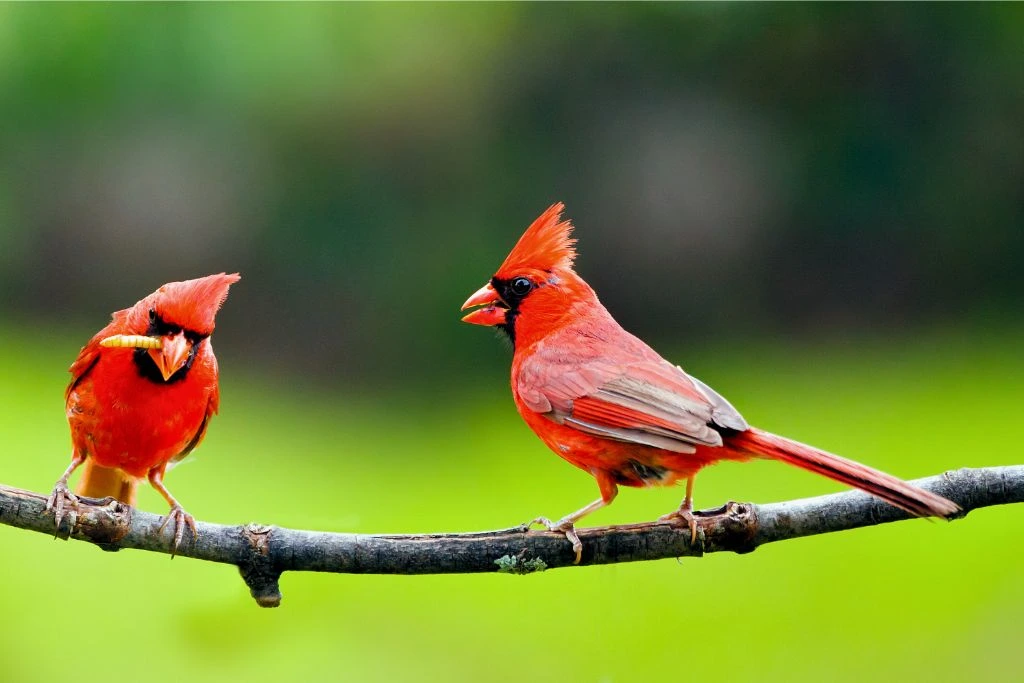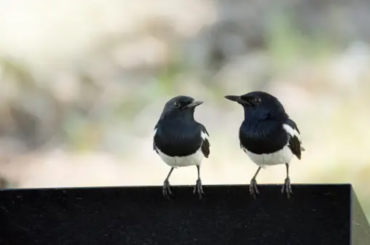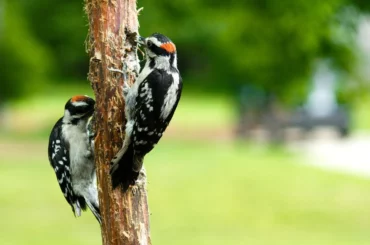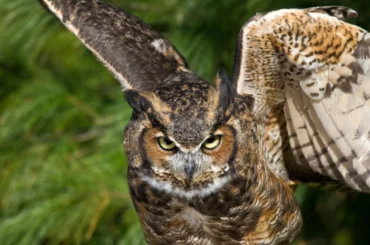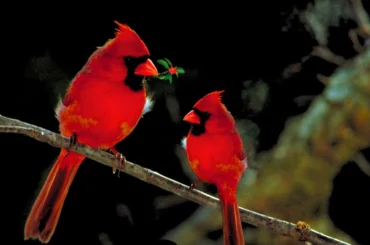Have you ever wondered about the stunning variety of birds with red heads that may be seen in Ohio? These little red birds’ males and females have striking characteristics that set them apart from other birds.
The reds in their plumage range from crimson to scarlet to deep wine color. Think of the male Northern Cardinal with its brilliant red plumage and unusual crest or the Rose-breasted Grosbeak with its artistic combination of black and red feathers. Spectators of birds and nature lovers alike are drawn to the vibrant hues these birds offer to Ohio’s landscapes.
What do Red-Headed Birds in Ohio look like?
Due to their similarities, Ohio’s red-headed birds are fascinating, sharing red plumage. The scarlet, crimson, and red colors of these species’ males and females are stunning. Their brilliant plumage enhances Ohio’s surroundings.
These birds are 5 to 8 inches long and brightly colored. They stand out and have an advantage in many contexts due to their small stature. Whether in backyards or above national parks, these small red birds rule their environment.
Ohio metropolitan adaptations, habitat, nesting, and wilderness areas are home to these magnificent birds. They adapt well to new environments, including cities, forests, and parks.
These birds feed differently. Some species eat mostly seeds, while others eat fruit, insects, and nuts. They stay healthy by adapting their diets to seasonal foods availability.
1. Northern Cardinal
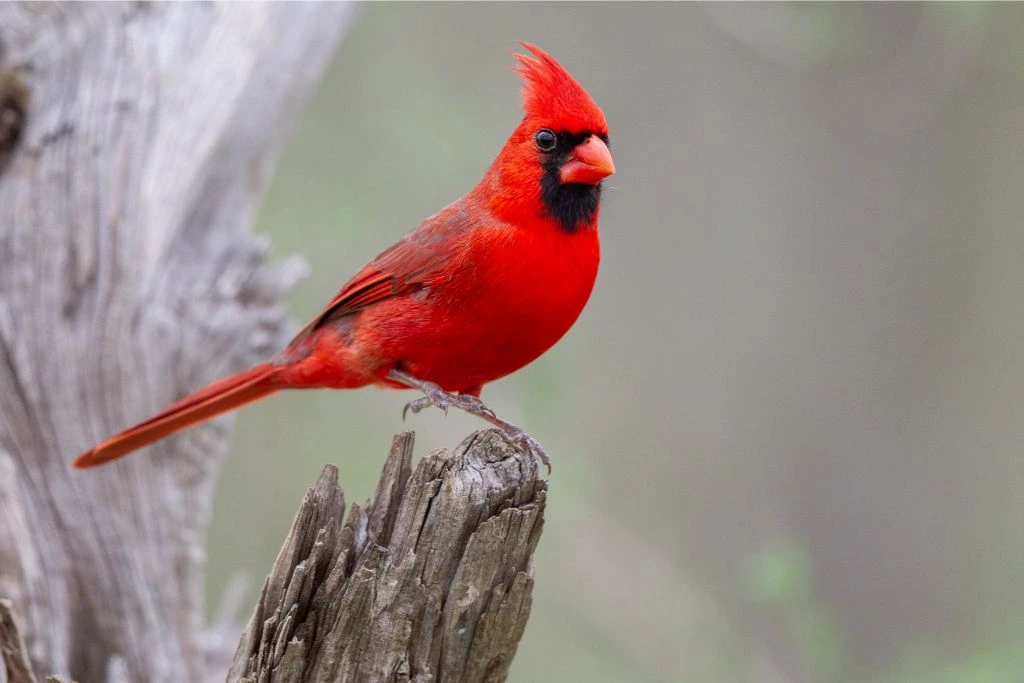
- Kingdom: Animalia
- Phylum: Chordata
- Class: Aves
- Order: Passeriformes
- Genus: Cardinalis
- Species: Cardinalis cardinalis
The Northern Cardinal, or Cardinalis cardinalis, is a stunning bird in Ohio. Females are a ruddy brown color, while males are a brilliant red. Both sexes share the same black facial masks and conical bills. A typical cardinal is 8 to 9 inches long and 10 to 12 inches wide.
Wild and domestic environments all play host to Northern Cardinals. They are suited to the varied landscapes of Ohio. Cardinals have a strong beak because of the seeds and fruits they eat.
Cardinals are monogamous, and they can communicate and attract mates with the help of their loud voices and beautiful melodies.
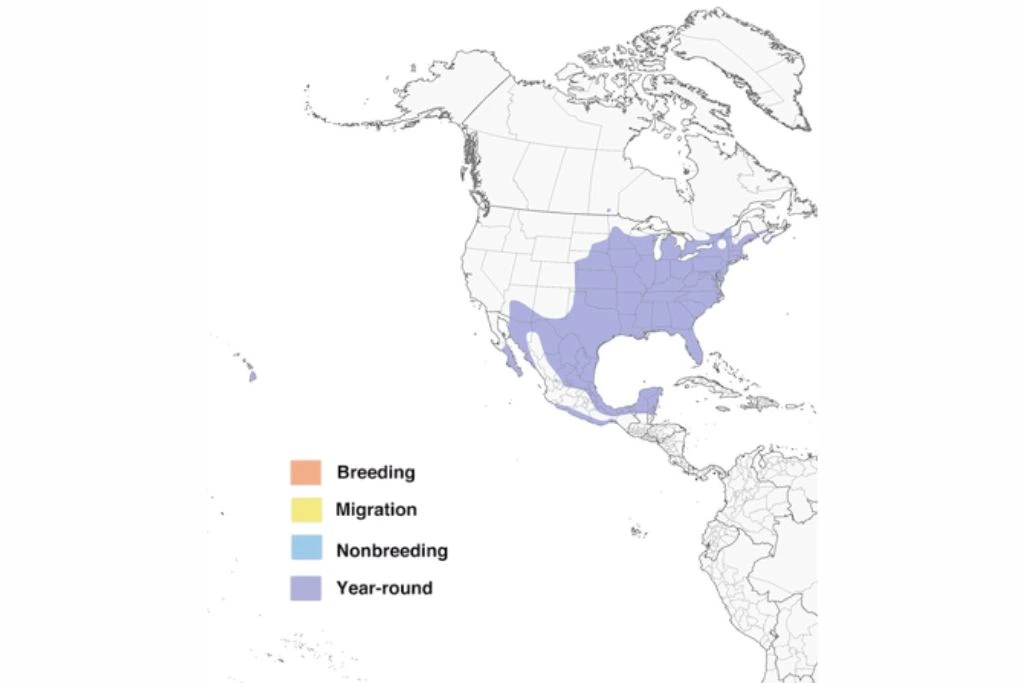
There is a 15-year lifespan for Northern Cardinals. Their year-round presence in Ohio’s feeders and gardens is greatly appreciated. These charming birds represent joy and warmth in holiday decor during the winter months.
2. Scarlet Tanager

- Kingdom: Animalia
- Phylum: Chordata
- Class: Aves
- Order: Passeriformes
- Genus: Piranga
- Species: Piranga olivacea
Ohio’s forests are home to a stunning midsummer songbird, the Scarlet Tanager (Piranga olivacea). Unlike the females, whose feathers are a muted olive green, the males’ are a brilliant red. They reach a length of 7 inches and boast a sturdy beak. A male bird’s red feathers help in the mating process.
They are found in the mixed and deciduous woodlands of Ohio. Their long, lean bodies and wings allow them to navigate the canopy expertly.
Among the insects and caterpillars that this bird enjoys are wasps. Fruit is a staple of their travel diet.

Scarlet Tanagers shed their red breeding plumage during migration for a more camouflage-like greenish-yellow look. Their signature tune is sung by a robin with a raspy voice. Seeing a Scarlet Tanager is a dream come true for every birdwatcher.
3. Summer Tanager

- Kingdom: Animalia
- Phylum: Chordata
- Class: Aves
- Order: Passeriformes
- Genus: Piranga
- Species: Piranga rubra
Summer Tanager (Piranga rubra) is a vibrantly colored bird. Male Summer Tanagers are red, while females are yellowish green. Their average length is 7 to 7.5 inches. The broad, conical bills of both sexes are adapted for crushing insects.
They prefer to hunt in large trees. Insects such as beetles, bees, and wasps are caught and consumed by their beaks. The Summer Tanager gets its food by “sallying,” or flying, out from a perch to catch insects. They consume a diet of fruit and insects when on the road. They may hide their vivid red hue by foraging in a forest.
It sounds like delicate robins singing. They have a lifespan of 7 to 10 years.
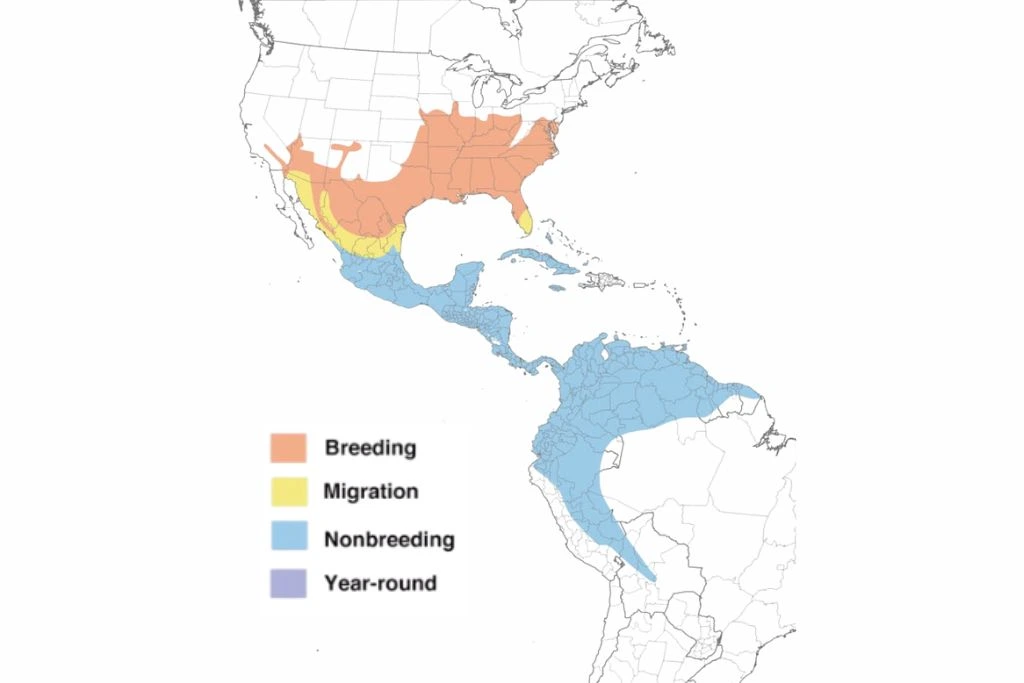
4. Common Redpoll
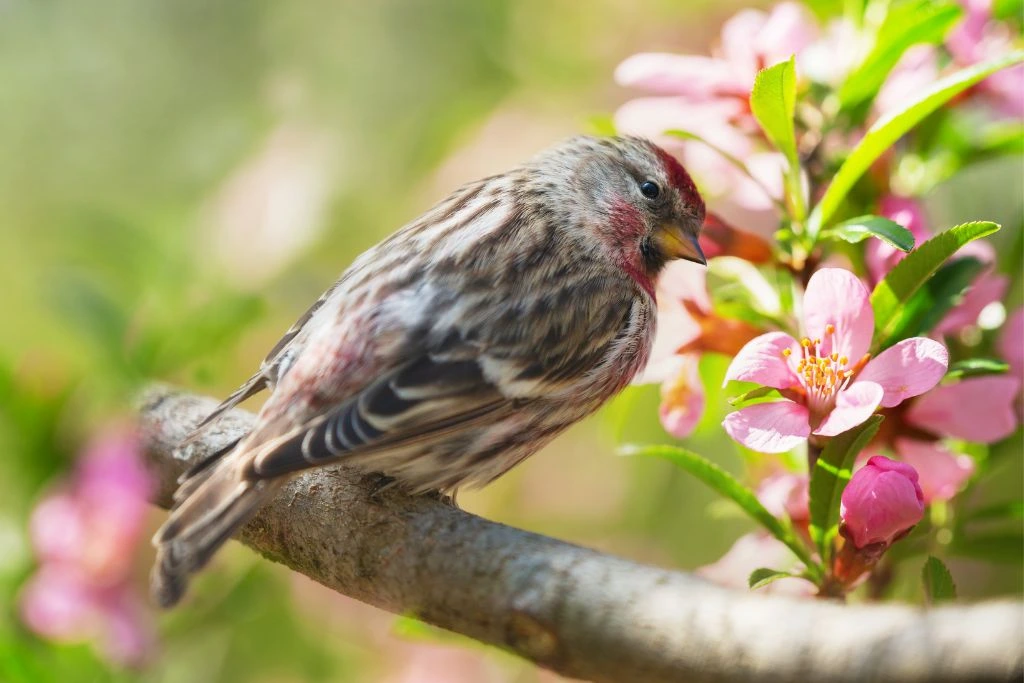
- Kingdom: Animalia
- Phylum: Chordata
- Class: Aves
- Order: Passeriformes
- Genus: Acanthis
- Species: Acanthis flammea
The Common Redpoll (Acanthis flammea) is a bright red finch, native to Ohio. These beautiful birds have a length of 5 to 6 inches and a width of 9 to 10 inches. Both sexes have bright red wings and tails and rosy pink breasts. They might use their tiny, cone-shaped bill to dislodge plant seeds.
In Northern Ohio, Common Redpolls could weather the cold winters. Their feathers act as insulation when it’s cold outside. These finches prefer habitats rich in birch and alder trees, from which they may harvest the small seeds, especially those found in cones that comprise the bulk of their diet.

Their “countershading” makes their pale undersides blend in with the icy ground, while their crimson uppers blend in with the vegetation. The annual migration of Common Redpolls can cover hundreds of kilometers despite the bird’s small size.
5. Pine Grosbeak
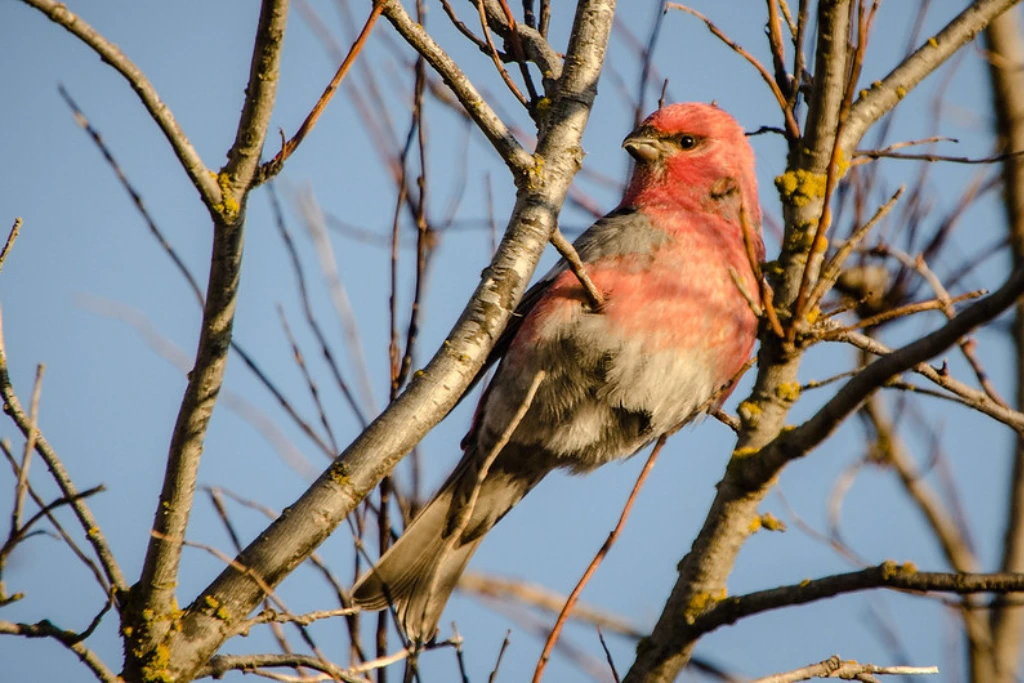
- Kingdom: Animalia
- Phylum: Chordata
- Class: Aves
- Order: Passeriformes
- Genus: Pinicola
- Species: Pinicola enucleator
The male Pine Grosbeak (Pinicola enucleator) that spends the winter in Ohio is handsome and sturdy. The females are a drab brown, while the males are bright pink. Their strong beak can split open seed pods. Pine grosbeaks can range in size from 8 to 10 inches.
Pine Grosbeaks do well in the chilly winters of places, like Ohio. Their feathers provide insulation, allowing them to endure the winters.
Pinyon-juniper forests are ideal habitats for these birds. They eat pine cone seeds, blooms, fruits, and berries. Depending on the food supply in their northern homeland, they may migrate to Ohio.
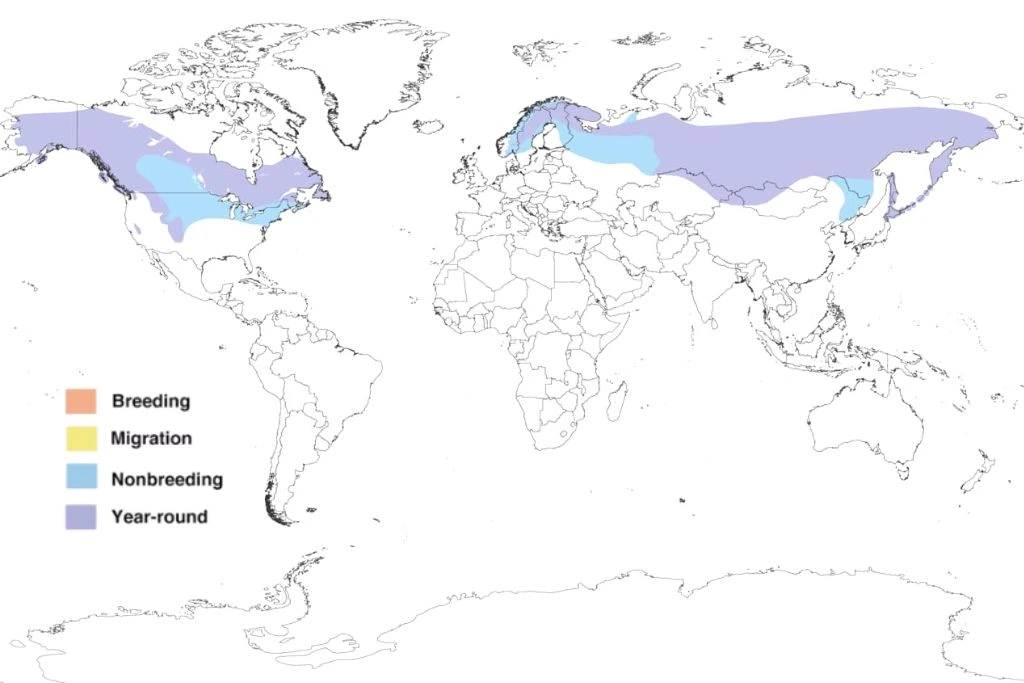
During the breeding season, Pine Grosbeaks produce a soft, beautiful song.
In the state, winter finches are transients. Despite its large size, the Pine Grosbeak can fly through the canopy of a forest.
6. Vermilion Flycatcher
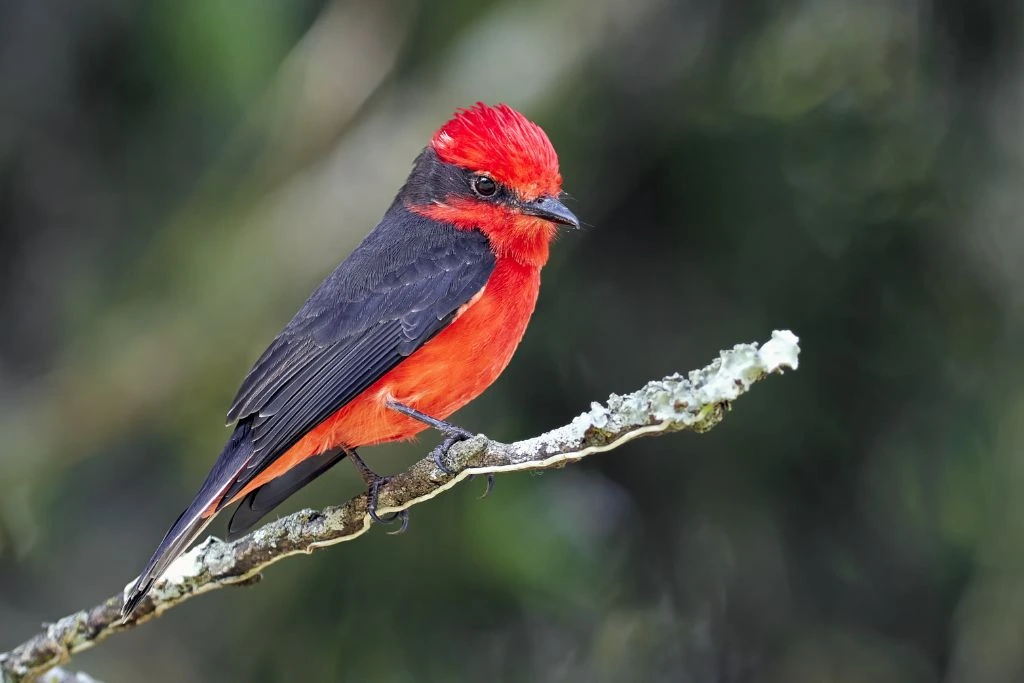
- Kingdom: Animalia
- Phylum: Chordata
- Class: Aves
- Order: Passeriformes
- Genus: Pyrocephalus
- Species: Pyrocephalus obscurus
The tiny and vibrant Vermilion Flycatcher, or Pyrocephalus obscurus, is a member of the thrush family. The males of this species have vivid red crowns and breasts and dark wings and tails. Females, on the other hand, are grayish-brown overall with reddish accents. Flycatchers are thin and about 5 to 6 inches in length.
The favored habitats of Vermilion Flycatchers include grasslands, deserts, and shrublands. They perch high up and make a swift downward dive to catch their primary food supply of flying insects.
A common nickname for the Vermilion Flycatcher is “firebird” due to its striking red appearance. The crest on their heads can be raised or lowered to express their emotions. Although it looks amazing, this bird has a rather subdued voice.
Mainly found in the states of Texas, New Mexico, and Arizona, Vermilion Flycatchers have been seen in Ohio during the spring and fall migrations.
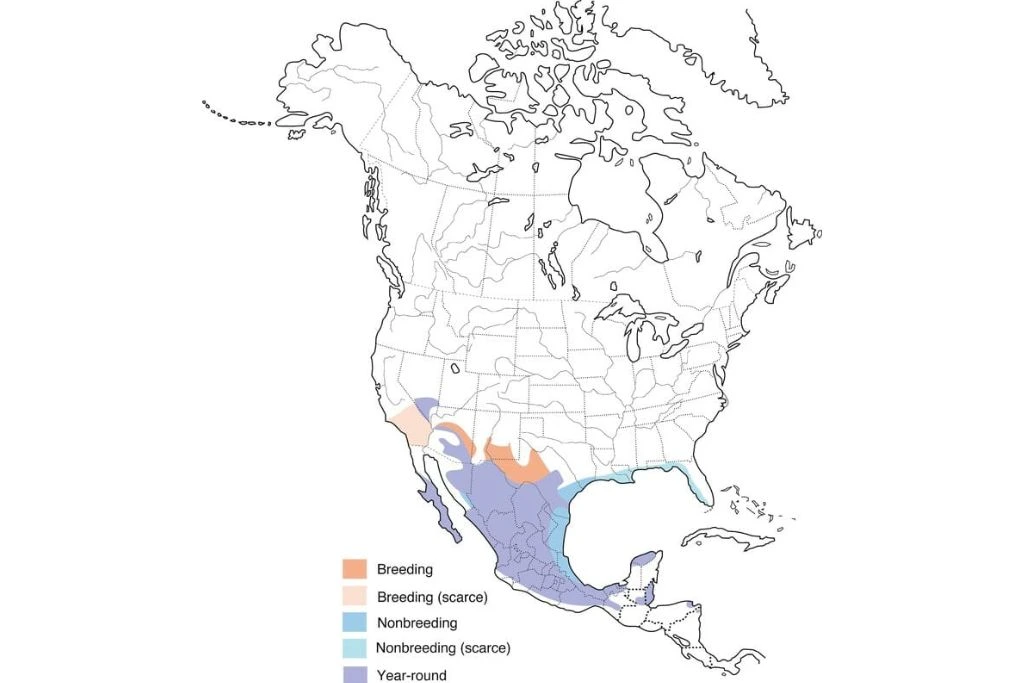
7. Red-bellied Woodpecker
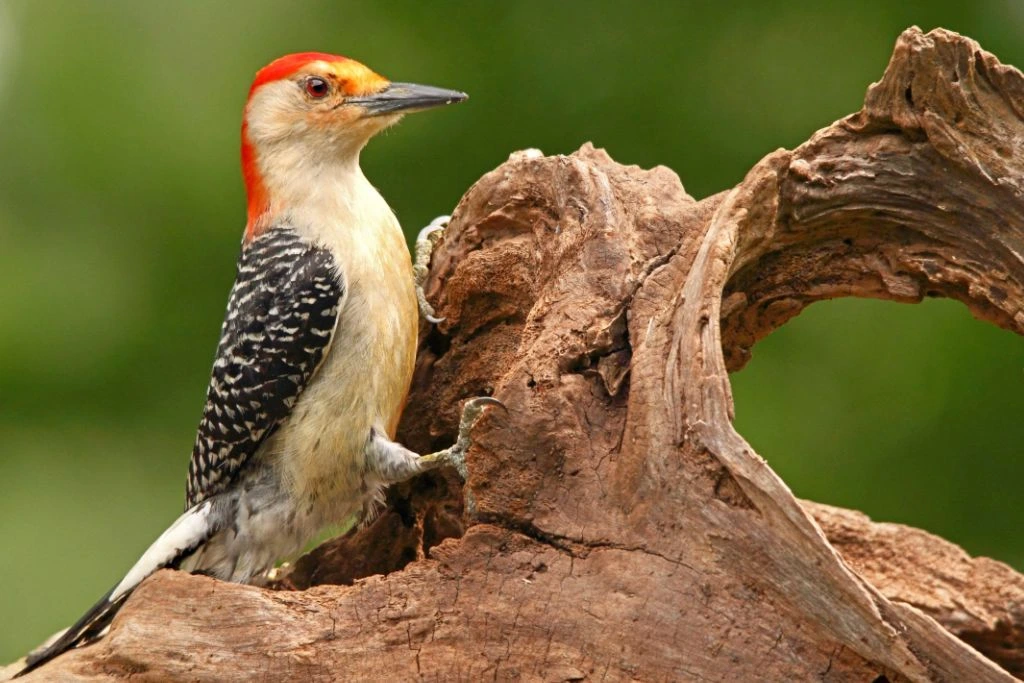
- Kingdom: Animalia
- Phylum: Chordata
- Class: Aves
- Order: Piciformes
- Genus: Melanerpes
- Species: Melanerpes carolinus
Red-bellied Woodpeckers (Melanerpes carolinus) are common in Ohio. The woodpecker’s scarlet underside makes it stand out. The rest of the bird is black and white. Red-bellied Woodpeckers’ crowns are subdued. They grow to be about 9 to 10 inches.
Both females and males are agile and powerful. Their tail feathers help propel them upward, and they make a “churring” sound during territorial displays.
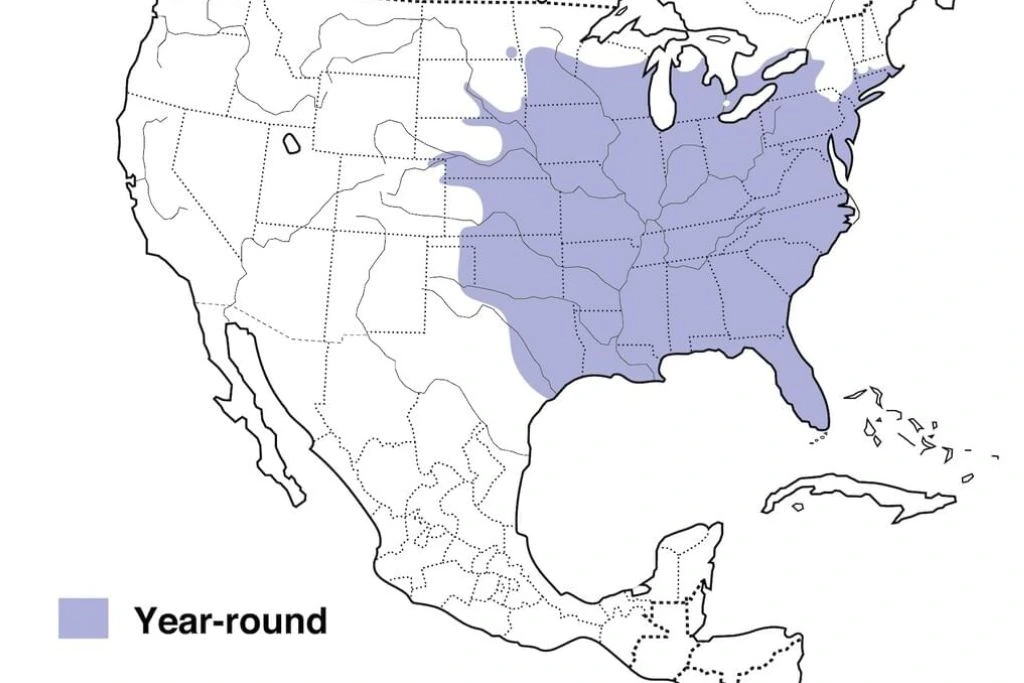
Ohio is home to Red-bellied Woodpeckers all year. Bird feeders with suet, nuts, and seeds can entice these forest dwellers, though these birds mostly eat insects, which they get by boring holes in the bark of trees.
8. Red-headed Woodpecker
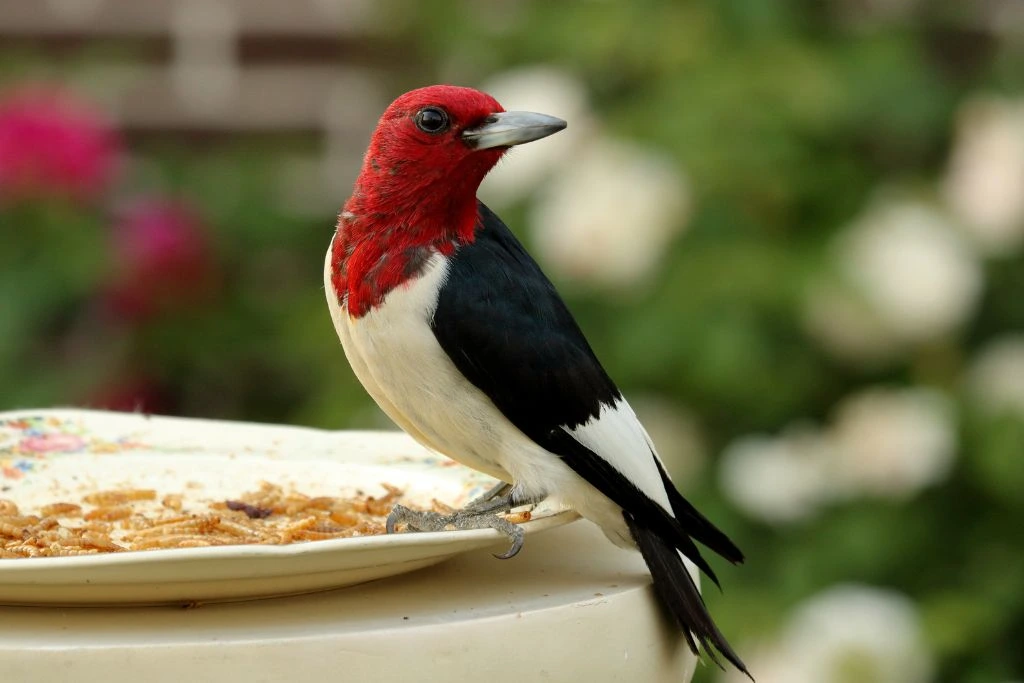
- Kingdom: Animalia
- Phylum: Chordata
- Class: Aves
- Order: Piciformes
- Genus: Melanerpes
- Species: Melanerpes erythrocephalus
The Red-headed Woodpecker’s head, neck, and throat (Melanerpes erythrocephalus) are a brilliant shade of red, with a white abdomen and wings on a black body. These are average-sized woodpeckers, measuring between 7 to 9 inches in length.
Woodpeckers are exclusively forest and wetland dwellers. They’re well-known for their skill in the air. They use their strong tail feathers and pointed beaks to climb tree trunks for insects, fruits, nuts, and seeds. They save their food in crevices in trees or beneath the bark.
The average lifespan of a wild red-headed woodpecker is 10 to 12 years.
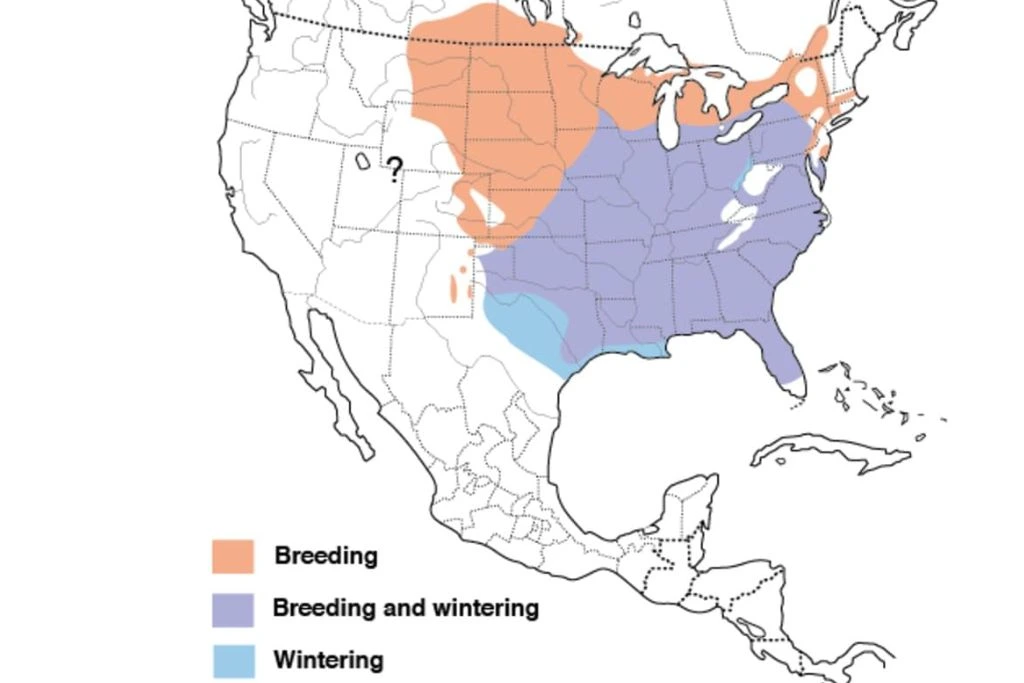
9. Red-breasted Nuthatch
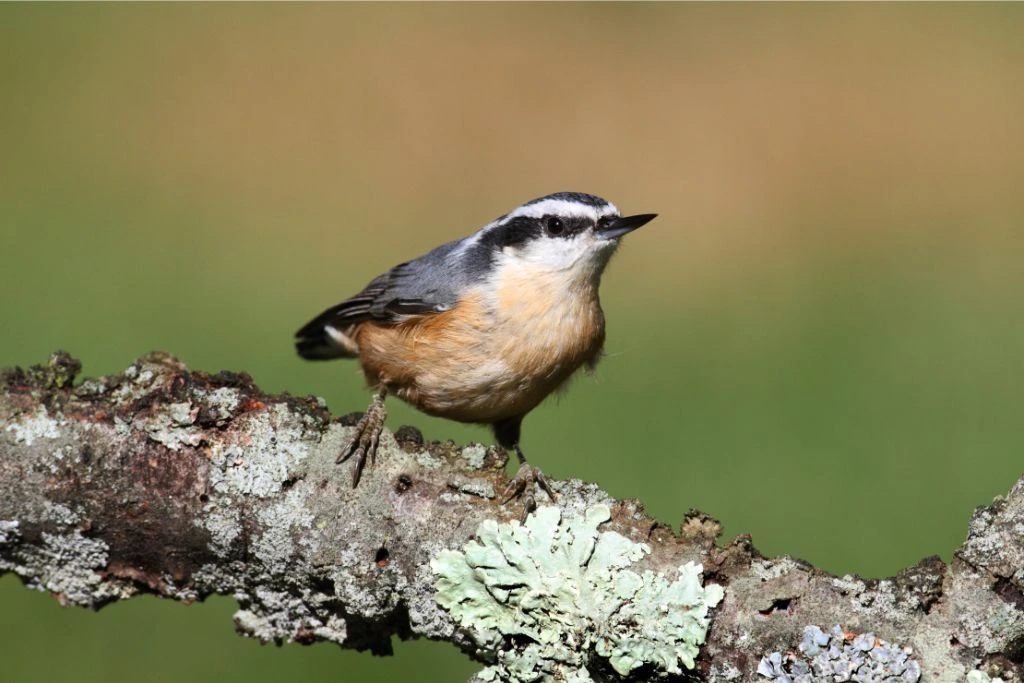
- Kingdom: Animalia
- Phylum: Chordata
- Class: Aves
- Order: Passeriformes
- Genus: Sitta
- Species: S. canadensis
Red-breasted Nuthatches (Sitta canadensi) weigh less than an ounce and are 4.5 inches long. They can extract insects and seeds from tree bark with their compact body, short tail, and long, thin bill, though pine seeds are their favorite meal, so these little birds live in coniferous woodlands.
Moving headfirst down tree trunks is an unusual habit of theirs.
Red-breasted Nuthatches are distributed across North America, including in Ohio’s coniferous forests, particularly in winter. They have special feathers that store body heat to survive the frigid winters in their habitat.
During breeding season, Red-breasted Nuthatches nest in tree cavities or birdhouses. Females lay 5 to 6 eggs and incubate them for two weeks. Chicks are born naked and defenseless but mature swiftly and leave the nest within three weeks. In the wild, the Red-breasted Nuthatch lives 2.5 to 6 years.

10. Red-Eyed Vireo
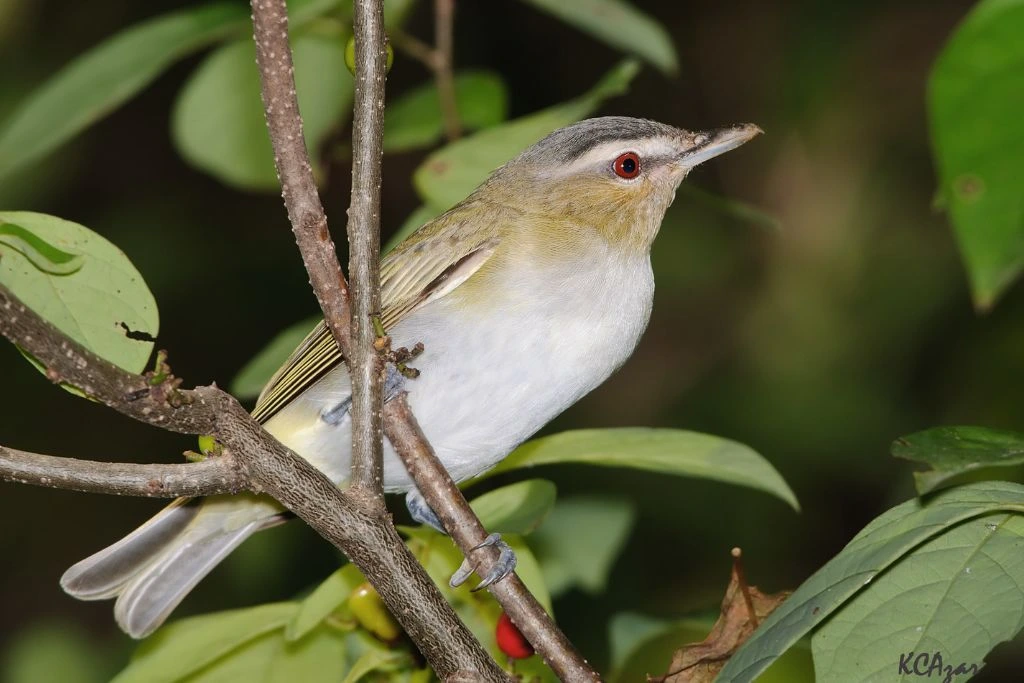
- Kingdom: Animalia
- Phylum: Chordata
- Class: Aves
- Order: Passeriformes
- Genus: Vireo
- Species: Vireo olivaceus
A small but beautiful bird, the Red-Eyed Vireo (Vireo olivaceus) measures about 5 to 6 inches in length. Their top is olive green and bottom is white. The Red-eyed Vireo’s red eye stands out against its otherwise gray head, as its name suggests.
Typically, you can find Red-Eyed vireos in deciduous or mixed forests. All day long, they sing in a low, sweet voice. Because of their camouflaging colors and demeanor, they are difficult to spot among the plants.
The Red-Eyed Vireo travels south from its northern range for breeding and wintering. They travel a distance of about 7500 miles each year.
The average lifespan of a wild Red-Eyed vireo is 10 years.
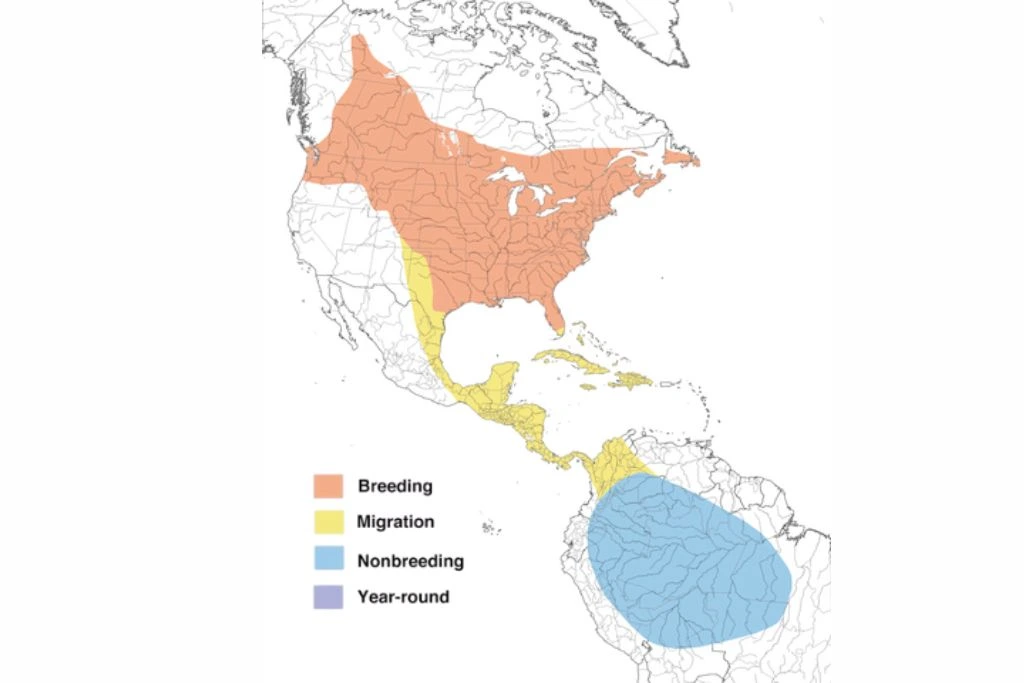
11. Red Crossbill
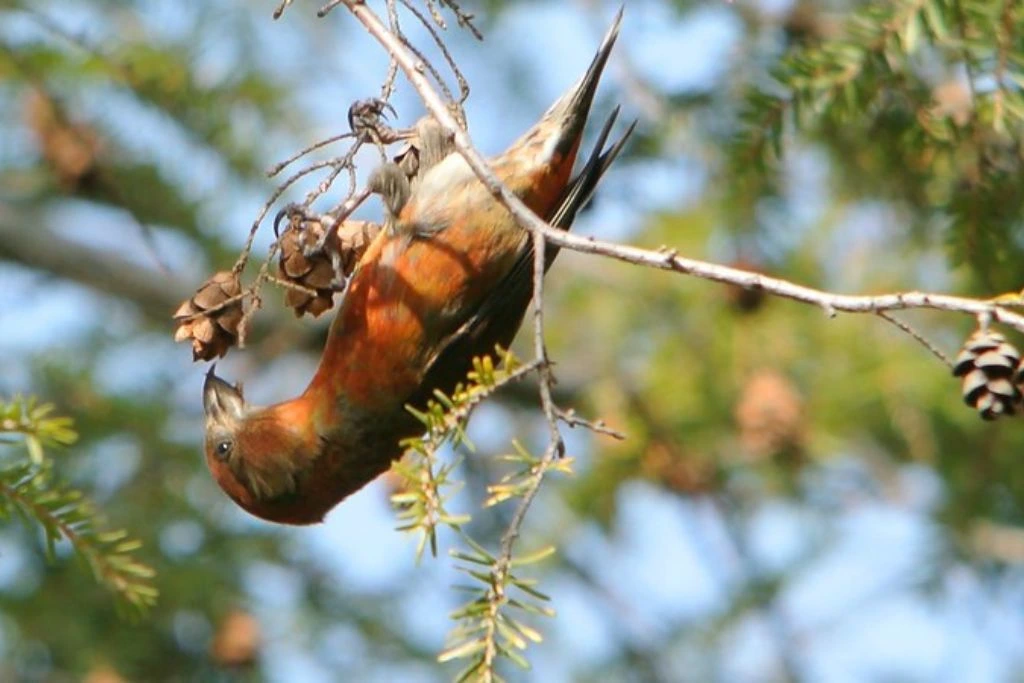
- Kingdom: Animalia
- Phylum: Chordata
- Class: Aves
- Order: Passeriformes
- Genus: Loxia
- Species: L. curvirostra
The length of a Red Crossbill (Loxia curvirostra) is six inches. Red or orange plumage and a curved beak let them get at the seeds in pine cones. Their tails are notched, and their wings are short and pointed.
These birds thrive in coniferous forests because they prefer pine seeds as a food source. Red crossbills can be found in Ohio’s evergreen forests throughout the winter months.
A Red Crossbill might make it to the ten-year mark in the wild. They scavenge across the state for sustenance.
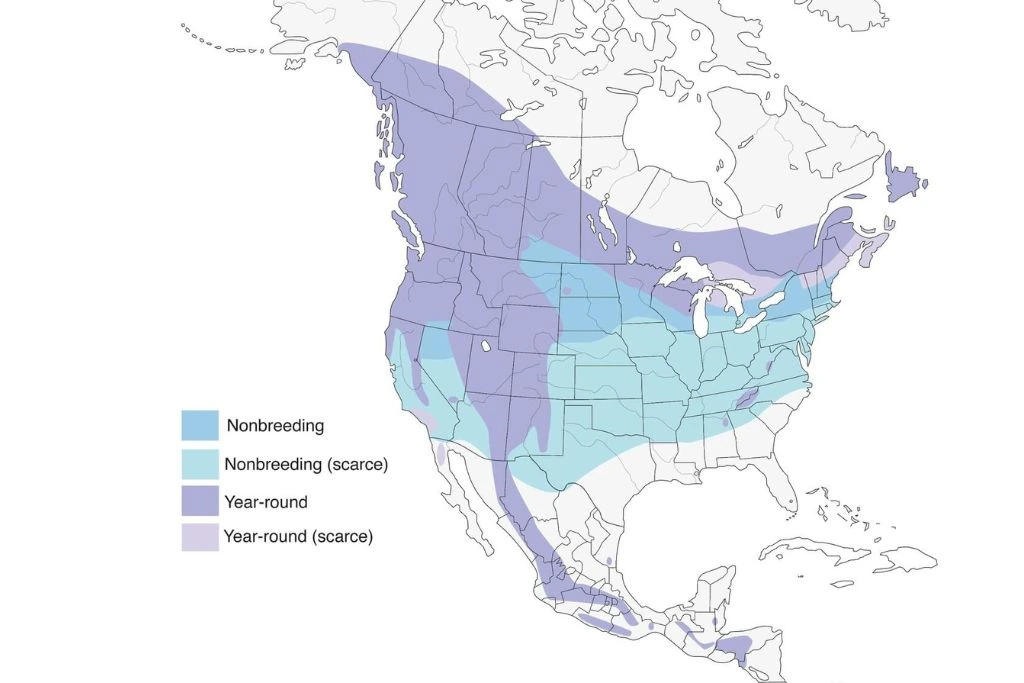
12. House Finch
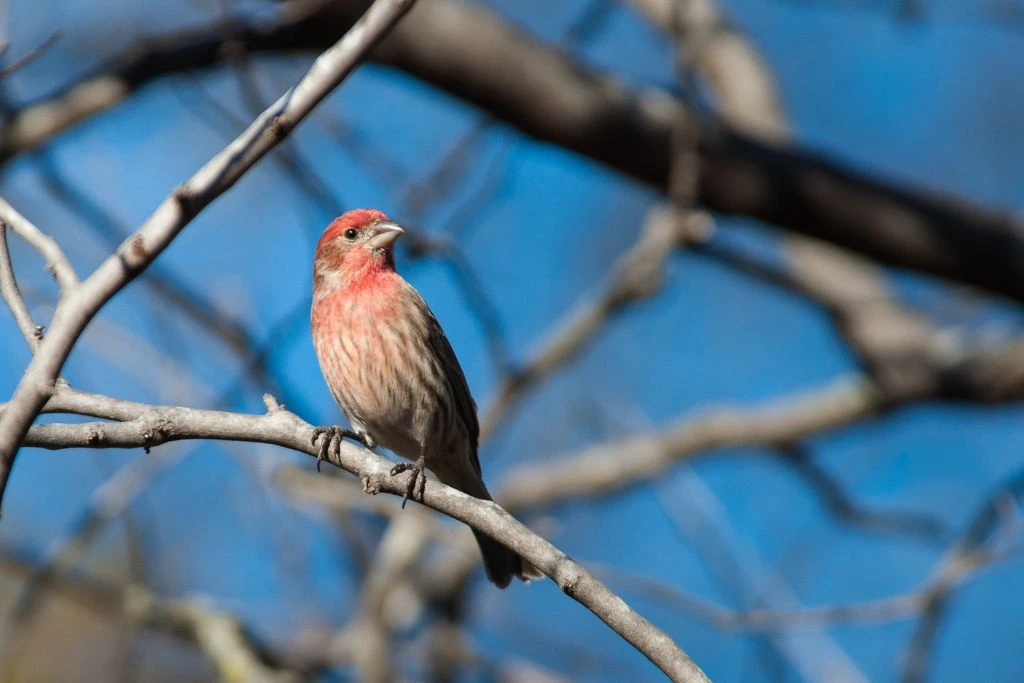
- Kingdom: Animalia
- Phylum: Chordata
- Class: Aves
- Order: Passeriformes
- Genus: Haemorhous
- Species: H. mexicanus
The House Finch (Haemorhous mexicanus) is a little bird with a sharp beak and a spherical body. White-winged Crossbills measure 5.5 inches. Male feathers are flaming red or orange. Their curved beak makes harvesting fir seeds easy. White bands on black wings earned them their name. Yellow-green females are gentler.
House Finches can thrive in various habitats, including city streets, suburban backyards, wooded regions, and even vast fields. They prefer nutrient-dense environments.
The strong beaks of house finches allow them to consume various foods, including seeds, berries, insects, and fruit.
In the early 20th century, House Finches from Western North America were imported to the US. Since then, they’ve become Ohio’s most populous bird. Although their usual lifespan is 2 to 3 years, Ohio finches can live up to 10 years in the wild.
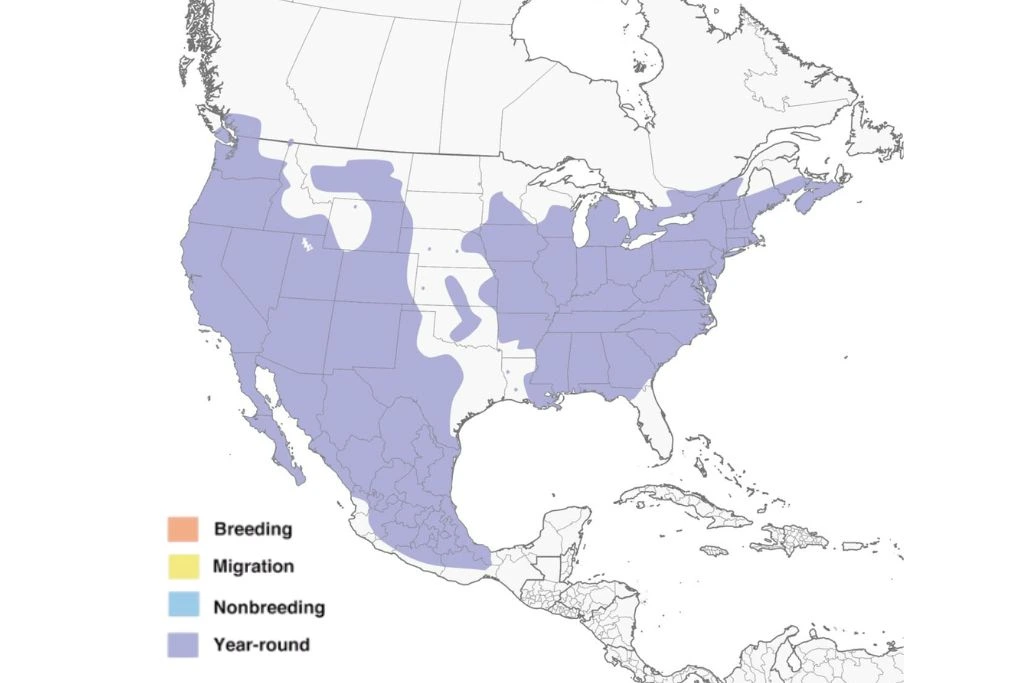
13. Purple Finch
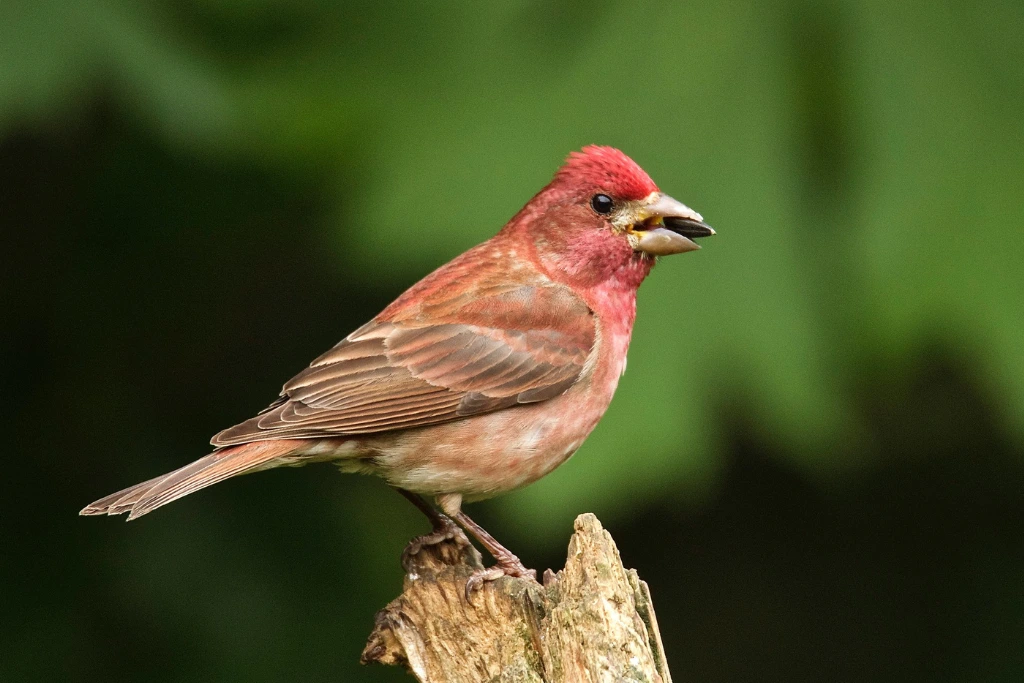
- Kingdom: Animalia
- Phylum: Chordata
- Class: Aves
- Order: Passeriformes
- Genus: Haemorhous
- Species: H. purpureus
The male Purple Finch (Haemorhous purpureus) is a drab brownish-purple with a blazing red crown, breast, and tail. The female is duller overall and has brown breasts and belly stripes. Both sexes may use their conical bills to crack open seeds. They can be 9 to 10 inches in width and 5 to 6 inches in length.
It’s common to see Purple Finches in suburban areas or wooded forests. They nest in trees or shrubs in spring and summer, as the females incubate 2 to 6 eggs for 14 days. Both parents feed the defenseless chicks.
They have a bill that can open the toughest pine cones, revealing the seeds inside, and this is their primary food source. They mostly subsist on nectar, though fruit and insects are also consumed.
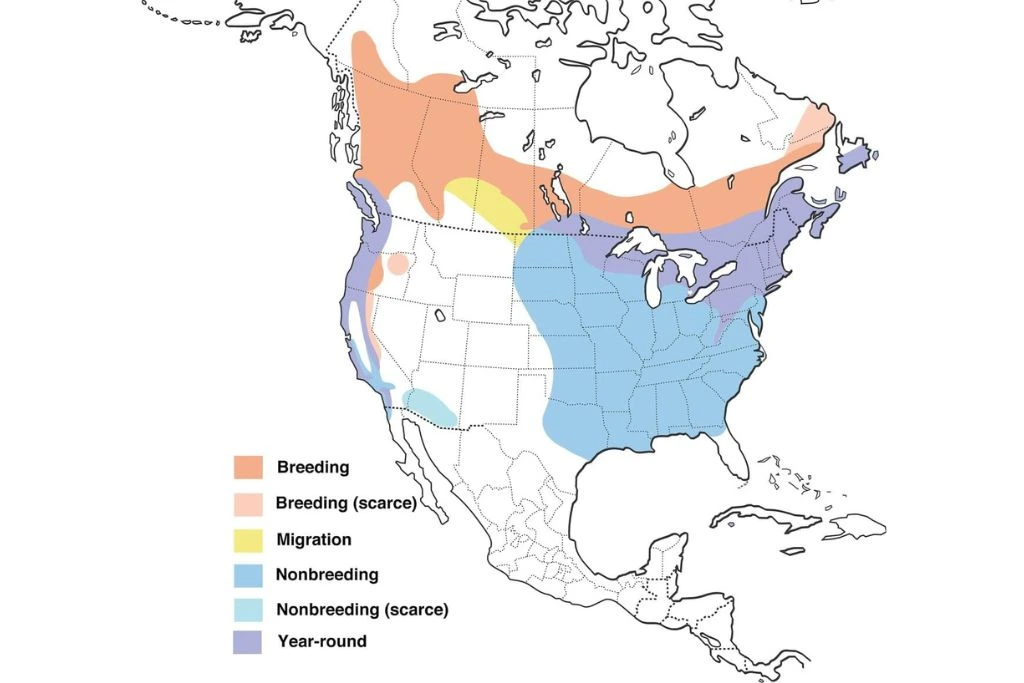
During the winter months, Purple Finches travel from Canada to Ohio. They frequently visit bird feeders, especially those filled with sunflower seeds.
14. White Winged Crossbill (Two-Barred Crossbill)

- Kingdom: Animalia
- Phylum: Chordata
- Class: Aves
- Order: Passeriformes
- Genus: Loxia
- Species: L. leucoptera
White-winged Crossbills (Loxia leucoptera) span 5.5 inches. The male has fiery red or orange feathers. Their bent beak makes fir seed collecting easy. White bands on black wings give them their name. Females are softer yellow-green.
Crossbill is well-adapted to feeding on conifer seeds, which comprise most of its diet. Their specialized bill allows them to pry open the scales of a cone to access the seeds inside.

You’ll rarely see a Crossbill in Ohio’s White-winged Northern coniferous woodlands. They may travel south to find food. Birdwatchers may be able to spot them in state parks, national forests, and nature reserves with adequate conifer habitats.
FAQs
What Is the Largest Red Bird in Ohio?
The largest red bird in Ohio is the Red-tailed Hawk.
Are Red Birds Good To Have Around?
Yes, red birds are generally considered good to have around, as they benefit the ecosystem and can help control insect populations.
What Is the Ohio Red-Breasted Bird?
The Red-breasted Nuthatch is a bird native to Ohio. It is a small bird with a blue-gray back and rusty-red breast.
What Attracts Redbirds?
Red birds are attracted to areas with diverse plants and trees that offer food, shelter, and nesting sites.

